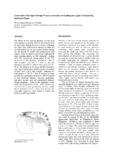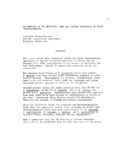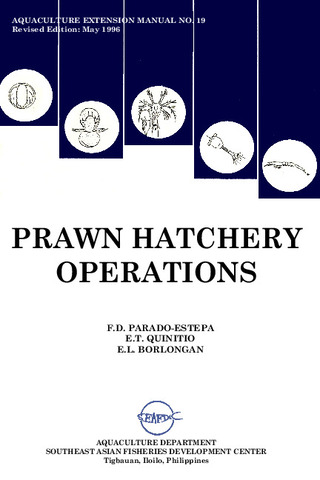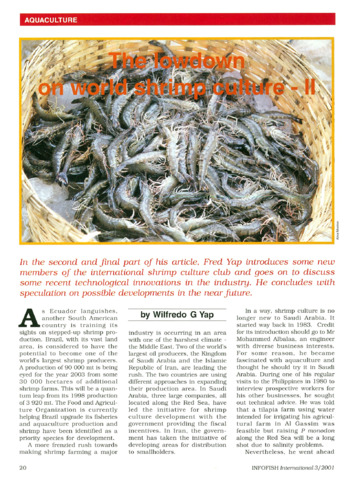Grow-out of the tiger shrimp Penaeus monodon in floating net cages in Batan Bay, northern Panay
- Global styles
- MLA
- Vancouver
- Elsevier - Harvard
- APA
- Help

View/
Date
2007Page views
7,661ASFA keyword
AGROVOC keyword
Taxonomic term
Metadata
Show full item record
Share
Abstract
The effects of two stocking densities and two feed combinations on growth, survival and production of the giant tiger shrimp Penaeus monodon in floating net cages were studied in an attempt to refine the existing technology on cage culture of tiger shrimp for the benefit of small- and medium-scale fish farmers. Four treatments were tested, replicated in time: stocking density of 100 shrimp/m2, feeding with 70% commercial shrimp pellets P and 30% 'trash fish' F; 100 shrimp/m2 and 50% P + 50% F; 200 shrimp/m2 and 70% P + 30% F; and 200 shrimp/m2 and 50% P + 50% F. Harvested after 93–95 d, the shrimps at the lower density treatments were significantly larger and had greater proportion of good sizes (>18 g body weight). Although the combination of 70% P + 30% F resulted in better growth, the combination of 50% P + 50% F resulted in more good-size shrimps. Survival, production, and gross income were not significantly different among treatments. None of the treatments in this study was economically viable. Gross income was very low due to poor growth and survival, mostly due to luminous vibriosis, then a new disease that eventually wiped out many shrimp hatcheries and ponds around Panay Island.
Suggested Citation
Genodepa, J. G., Sanoy, M. J., & Banehit, G. (2007). Grow-out of the tiger shrimp Penaeus monodon in floating net cages in Batan Bay, northern Panay. In T. U. Bagarinao (Ed.), Research Output of the Fisheries Sector Program (Vol. 2. Reports on Fisheries and Aquaculture, pp. 100-104). Quezon City, Philippines: Bureau of Agricultural Research, Department of Agriculture.
Type
Book chapterISBN
9718511776
Related items
Showing items related by title, author, creator and subject.
-
An overview of the nutrition, feed and feeding techniques of prawn penaeid/shrimps
Piedad-Pascual, Felicitas (Philippine Council for Aquatic and Marine Research and Development, 1989)This paper echoes what transpired during the first International Conference of Penaeid Prawns/Shrimps held in Iloilo City in December 4-7, 1984, particularly on the Nutrition nd Feed Development. Around 25 papers were ... -
Series: Aquaculture extension manual; No. 19
Prawn hatchery operations
Parado-Estepa, Fe D.; Quinitio, Emilia T. ; Borlongan, Emeterio L. (Aquaculture Department, Southeast Asian Fisheries Development Center, 1996-05)
The manual, an updated version of the 1984 SEAFDEC/AQD manual, presents the underlying principles and step-by-step instructions of prawn larval and post-larval rearing. The techniques described are not only applicable to ...
; Borlongan, Emeterio L. (Aquaculture Department, Southeast Asian Fisheries Development Center, 1996-05)
The manual, an updated version of the 1984 SEAFDEC/AQD manual, presents the underlying principles and step-by-step instructions of prawn larval and post-larval rearing. The techniques described are not only applicable to ... -
The lowdown on world shrimp culture - II
Yap, Wilfredo G. (INFOFISH, 2001)This paper introduces some new members of the international shrimp culture club and goes on to discuss some recent technological innovations in the industry, particularly the polyculture of tilapia (mainly Oreochromis ...





